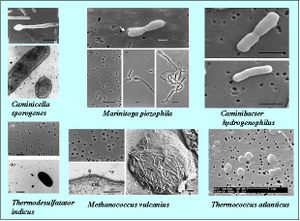Phlebovirus Rift Valley Fever Virus: Difference between revisions
(Created page with "{{Uncurated}} ==Classification== Domain/Superkingdom/Kingdom; Phylum; Class; Order; Family [Others may be used. Use [http://www.ncbi.nlm.nih.gov/Taxonomy/ NCBI] link to find...") |
|||
| Line 9: | Line 9: | ||
==Description and Significance== | ==Description and Significance== | ||
Rift Valley Fever Virus (RVFV) is a Phlebovirus of the Bunyaviridae family [1]. It is characterized by a three-segmented genome of negative/ambisense strand RNA in viral nucleocaspid protein and enveloped by a lipid bilayer containing two viral glycoproteins, Gn and Gc like all members of the virus family [5]. In livestock particularly cattle, sheep, and goats, it causes a large number of abortions and close to 100% mortality rates among young animals which results to a significant economic loss [3]. The virus is replicated in domestic ruminant animals resulting in high mortality and abortions [6]. Infection in humans can cause acute illness and even neurological disorders, blindness, hemorrhagic fever and thrombosis. The capability of the virus to cause major epidemics among livestock and humans make infection with this pathogen a serious public health concern. | |||
==Structure, Metabolism, and Life Cycle== | ==Structure, Metabolism, and Life Cycle== | ||
Revision as of 06:38, 22 July 2013
Classification
Domain/Superkingdom/Kingdom; Phylum; Class; Order; Family [Others may be used. Use NCBI link to find]
Genus Species
Description and Significance
Rift Valley Fever Virus (RVFV) is a Phlebovirus of the Bunyaviridae family [1]. It is characterized by a three-segmented genome of negative/ambisense strand RNA in viral nucleocaspid protein and enveloped by a lipid bilayer containing two viral glycoproteins, Gn and Gc like all members of the virus family [5]. In livestock particularly cattle, sheep, and goats, it causes a large number of abortions and close to 100% mortality rates among young animals which results to a significant economic loss [3]. The virus is replicated in domestic ruminant animals resulting in high mortality and abortions [6]. Infection in humans can cause acute illness and even neurological disorders, blindness, hemorrhagic fever and thrombosis. The capability of the virus to cause major epidemics among livestock and humans make infection with this pathogen a serious public health concern.
Structure, Metabolism, and Life Cycle
Interesting features of its structure; how it gains energy (how it replicates, if virus); what important molecules it produces (if any), does it have an interesting life cycle?
Ecology and Pathogenesis
Natural habitat (soil, water, commensal of humans or animals?)
If relevant, how does this organism cause disease? Human, animal, or plant hosts? Important virulence factors, as well as patient symptoms.
References
[1] EXAMPLE ONLY. REPLACE WITH YOUR REFERENCES. Takai, K., Sugai, A., Itoh, T., and Horikoshi, K. 2000. "Palaeococcus ferrophilus gen. nov., sp. nov., a barophilic, hyperthermophilic archaeon from a deep-sea hydrothermal vent chimney". International Journal of Systematic and Evolutionary Microbiology. 50: 489-500. http://ijs.sgmjournals.org/cgi/reprint/50/2/489
Author
Page authored by _____, student of Mandy Brosnahan, Instructor at the University of Minnesota-Twin Cities, MICB 3301/3303: Biology of Microorganisms.

